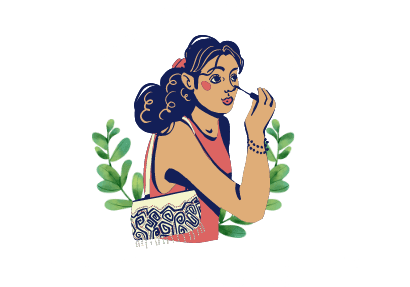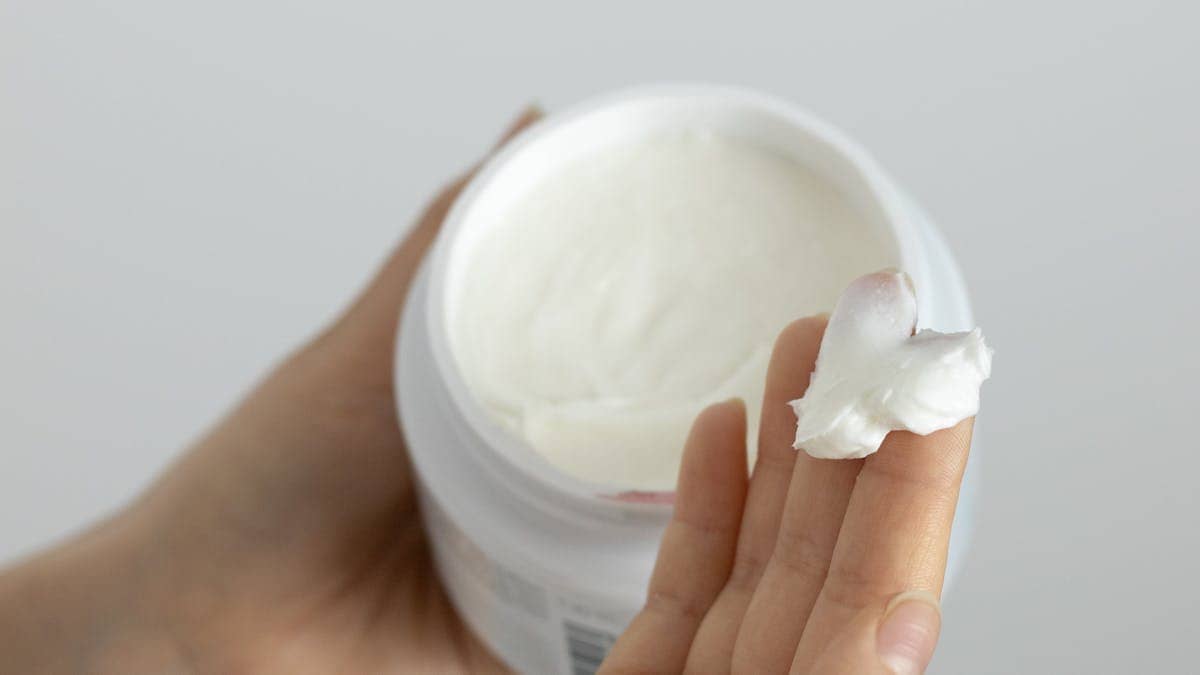Here is your complete guide to shea butter and mango butter.
Introduction to Shea Butter and Mango Butter
In the world of natural skincare, few ingredients are as revered as shea butter and mango butter. These two luxurious butters have gained immense popularity for their remarkable moisturizing properties and skin-nourishing benefits. This article will explore everything you need to know about shea butter and mango butter, from their origins and benefits to their uses in skincare products.
Both they are derived from the seeds of trees native to Africa and South Asia, respectively. They are packed with essential nutrients that can transform your skincare routine. Whether you’re looking for deep hydration, anti-aging effects, or a natural solution for dry skin, these butters have got you covered.
Let’s dive into the fascinating world of shea butter and mango butter!
What is Shea Butter?
Origin and Extraction
Shea butter is derived from the nuts of the shea tree (Vitellaria paradoxa), which grows primarily in West Africa. The extraction process involves several steps:
- Harvesting: Shea nuts are collected from the ground after they fall from the tree.
- Drying: The nuts are sun-dried to reduce moisture content.
- Cracking: Dried nuts are cracked open to extract the kernels.
- Roasting: The kernels are roasted to enhance flavor and facilitate oil extraction.
- Grinding: The roasted kernels are ground into a paste.
- Boiling: The paste is boiled in water, allowing the fat to separate and rise to the surface.
- Cooling: Once cooled, the fat solidifies into what we know as shea butter.
Nutritional Profile
Shea butter is rich in:
- Fatty acids: Such as oleic acid, stearic acid, linoleic acid, and palmitic acid.
- Vitamins: Particularly vitamins A, E, and F, which are essential for skin health.
Uses in Skincare
Shea butter is commonly used in:
- Moisturizers
- Body creams
- Lip balms
- Hair conditioners
Its high-fat content makes it an excellent emollient that helps to lock in moisture.
What is Mango Butter?
Origin and Extraction
Mango butter comes from the seeds of the mango tree (Mangifera indica), which is native to South Asia. The extraction process includes:
- Harvesting: Mango seeds are collected after the fruit has been consumed.
- Drying: Seeds are dried under sunlight to remove moisture.
- Cracking: Dried seeds are cracked open to access the inner kernel.
- Grinding: The kernel is ground into a fine powder.
- Melting: The powder is melted to separate the oil from the solids.
- Cooling: Once cooled, it solidifies into mango butter.
Nutritional Profile
Mango butter contains:
- Fatty acids: Including oleic acid and stearic acid.
- Vitamins: Rich in vitamins C and E, known for their antioxidant properties.
Uses in Skincare
Mango butter is often found in:
- Lotions
- Body butters
- Hair care products
- Soaps
Its creamy texture makes it a popular choice for hydrating dry skin.
Similarities Between Shea Butter and Mango Butter
Both of them share several similarities that make them popular choices in skincare:
Moisturizing Properties
- Both butters provide deep hydration, making them ideal for dry skin.
- They create a protective barrier on the skin to lock in moisture.
Nutritional Benefits
| Feature | Shea Butter | Mango Butter |
|---|---|---|
| Moisturizing | Yes | Yes |
| Nutrient Content | High in vitamins A, E, F | High in vitamins C, E |
| Texture | Thicker | Creamier |
Common Uses in Skincare Products
Both butters can be found in various skincare formulations such as:
- Body creams
- Lip balms
- Hair conditioners
- Soaps
Differences Between Shea Butter and Mango Butter
While they share many benefits, they also have distinct differences that may influence your choice between them.
Texture and Consistency
- Shea Butter: Generally thicker and denser, providing a heavier feel on the skin.
- Mango Butter: Creamier and lighter, making it easier to spread.
Absorption Rate
- Shea Butter: Absorbs more slowly due to its thicker consistency.
- Mango Butter: Absorbs quickly into the skin without leaving a greasy residue.
Skin Type Suitability
| Aspect | Shea Butter | Mango Butter |
|---|---|---|
| Absorption Rate | Slower | Faster |
| Ideal for | Oily skin | Dry skin |
| Greasiness | Can feel greasy | Non-greasy |
Benefits of Shea Butter
Skin Benefits
- Anti-inflammatory Properties
- Helps soothe irritated skin conditions like eczema or psoriasis.
- Healing Properties
- Promotes healing of minor cuts, burns, and scars due to its high vitamin A content.
- Sun Protection
- Offers a natural SPF of around 6; however, it should not replace sunscreen.
- Anti-aging Effects
- Rich in antioxidants that help combat free radicals.
Hair Benefits
- Moisturizing Effects
- Deeply hydrates dry or damaged hair.
- Prevents Breakage
- Strengthens hair strands and reduces split ends.
- Scalp Health
- Nourishes the scalp, reducing dryness and flakiness.
Benefits of Mango Butter
Skin Benefits
- Hydration Properties
- Provides intense moisture for dry skin types.
- Anti-aging Effects
- Contains antioxidants that help fight signs of aging such as wrinkles and fine lines.
- Soothing Properties
- Calms irritated or inflamed skin.
- Improves Skin Elasticity
- Enhances skin firmness due to its rich fatty acid content.
Hair Benefits
- Nourishment for Hair
- Provides essential nutrients that promote healthy hair growth.
- Moisture Retention
- Helps retain moisture in hair strands, preventing dryness.
- Frizz Control
- Smoothens hair cuticles for reduced frizz.
How to Use Shea Butter and Mango Butter
Using them effectively can enhance your skincare routine significantly:
Application Methods
- Direct Application
- Scoop a small amount of either butter into your hands, warm it up by rubbing between palms, then apply directly onto clean skin or hair.
- Mixing with Other Ingredients
- Combine with essential oils or other carrier oils for added benefits (e.g., lavender oil for relaxation).
- DIY Recipes
Simple DIY Body Butter Recipe
| Ingredient | Amount |
|---|---|
| Shea Butter | ½ cup |
| Mango Butter | ½ cup |
| Coconut Oil | ¼ cup |
| Essential Oils | 10 drops (optional) |
- Melt them with coconut oil using a double boiler.
- Remove from heat; let cool slightly before adding essential oils.
- Whip with a hand mixer until fluffy; store in an airtight container.
Brands of Shea Butter and Mango Butter
| Brand Name | Official Link |
|---|---|
| Baraka Shea Butter | barakasheabutter.com |
| Shea Butter Like Whoa | sheabutterlikewhoa.com |
| African Fair Trade Society | africanfairtradesociety.com |
| Institut Karité | ikparis.com |
| Akoma Skincare | akomaskincare.co.uk |
| SheaMoisture | sheamoisture.com |
Tips for Using Shea Butter and Mango Butter
1. Choose the Right Type
- Unrefined vs. Refined: Always opt for unrefined shea butter and mango butter to maximize their natural benefits. Unrefined versions retain essential nutrients that are often lost during the refining process.
2. Warm Before Application
- Melting the Butters: Rub a small amount of butter between your palms to warm it up before applying. This helps it spread more easily and absorb better into the skin.
3. Mix with Other Oils
- Enhance Benefits: Consider mixing shea butter or mango butter with other carrier oils (like jojoba or coconut oil) to boost hydration and improve texture.
4. Use in DIY Recipes
- Create Custom Products: Use these butters in homemade lotions, balms, or hair treatments to tailor products to your specific needs.
5. Store Properly
- Keep Away from Heat and Light: Store your butter in a cool, dark place to maintain their quality and extend shelf life.
6. Patch Test First
- Avoid Allergic Reactions: Always perform a patch test on a small area of skin before full application to check for any adverse reactions.
7. Adjust Quantity Based on Skin Type
- Tailor Usage: For oily skin, use a smaller amount of shea butter, while those with very dry skin may benefit from using more of either butter.
Frequency of Use for Shea Butter and Mango Butter
Daily Use
- Moisturizer: Both they can be used daily as part of your skincare routine, especially after bathing when your skin is still damp to lock in moisture.
Weekly Treatments
- Deep Conditioning: Use shea butter or mango butter as a deep conditioning treatment for hair once a week, applying it generously and leaving it on for at least 30 minutes before washing out.
As Needed
- Targeted Areas: For areas prone to dryness or irritation (like elbows, knees, or cracked heels), apply as needed throughout the day for relief.
Best Time to Use Shea Butter and Mango Butter
After Showering or Bathing
- Locking in Moisture: The best time to apply shea butter or mango butter is immediately after showering or bathing when your skin is still slightly damp. This helps seal in moisture effectively.
Before Bedtime
- Night Treatment: Applying these butters before bed allows them to work overnight, providing deep hydration while you sleep.
During Seasonal Changes
- Combat Dryness: Increase usage during colder months when skin tends to dry out more quickly due to lower humidity levels.
By following these tips, understanding the frequency of use, and knowing the best times for application, you can maximize the benefits of them in your skincare routine!
Common Mistakes to Avoid When Using Shea Butter and Mango Butter
1. Not Choosing the Right Type
- Mistake: Selecting refined over unrefined products.
- Solution: Always opt for unrefined shea butter and mango butter to retain their natural nutrients.
2. Overusing the Product
- Mistake: Applying too much butter can lead to greasiness.
- Solution: Use a small amount and warm it in your hands before application for better absorption.
3. Ignoring Skin Sensitivities
- Mistake: Not performing a patch test before full application.
- Solution: Always test on a small area of skin to check for allergic reactions.
4. Improper Storage
- Mistake: Storing butters in direct sunlight or heat.
- Solution: Keep them in a cool, dark place to maintain their quality.
5. Mixing with Incompatible Ingredients
- Mistake: Combining butters with oils that may not blend well.
- Solution: Research compatibility of ingredients before mixing for DIY recipes.
6. Expecting Immediate Results
- Mistake: Anticipating instant improvements in skin or hair health.
- Solution: Be patient; consistent use over time yields the best results.
By avoiding these common mistakes, you can maximize the benefits of shea butter and mango butter in your skincare routine!
Read Also: Best Creams for Handjobs.
FAQs about Shea Butter and Mango Butter
Can I use shea butter on my face?
Yes! Shea butter can be used on your face as it provides deep hydration but may be too heavy for oily skin types.
Read Also: Aloe Facial Cleansing Foam.
Is mango butter safe for sensitive skin?
Yes! Mango butter is generally safe for sensitive skin; however, always perform a patch test first.
Read Also: Shea Butter Hair Cream.
How do I choose between shea butter and mango butter?
Consider your skin type; if you have oily skin, you might prefer mango butter, while those with dry skin may benefit more from shea butter‘s thicker consistency.
Read Also: Aloe Vera Spray for Hair.
Conclusion
In summary, both shea butter and mango butter offer incredible benefits for skincare enthusiasts seeking natural solutions for hydration and nourishment. With their unique properties—ranging from anti-inflammatory effects to moisturizing capabilities—these butters can cater to various skin types and concerns.
Read Also: Coco Butter Around Eyes.
Whether you choose shea butter, mango butter, or even both in your routine, you’re sure to enjoy healthier, more radiant skin! Embrace these natural treasures today and experience their transformative effects firsthand!
Read Also: Is Shea Moisture Good for Curly Hair?

